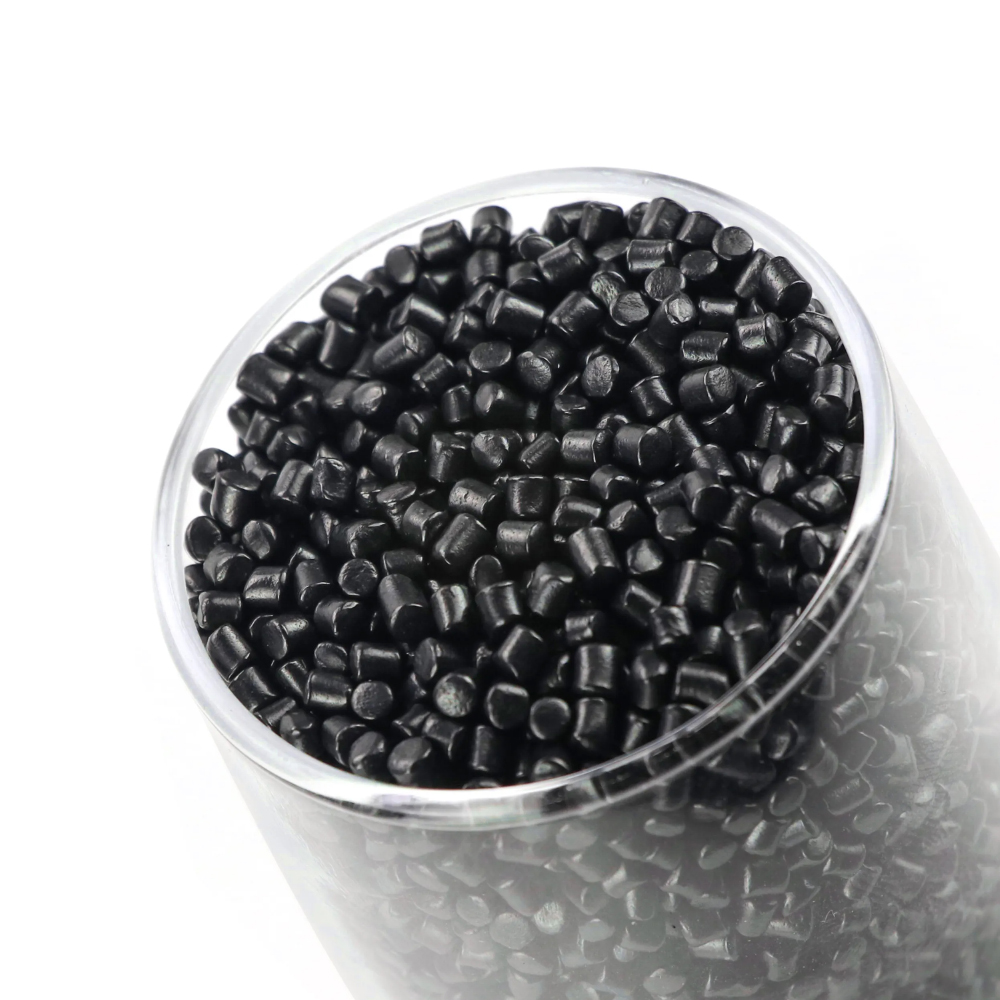
- +8615880211820
- [email protected]
- Parc industriel de Tonga, Xiamen
ans le monde de la fabrication de plastiques, l'obtention d'une esthétique métallique haut de gamme est traditionnellement associée à des coûts importants. Cependant, l’introduction du colorant PET bleu métallisé personnalisé révolutionne ce paysage, offrant l’attrait du métal coloré sans les dépenses liées aux finitions en aluminium brossé ou poli.
Conçu pour reproduire la sophistication d'une finition automobile à couche transparente hautement polie, le mélange maître en plastique PET de couleur bleu métallisé s'avère être une solution polyvalente pour améliorer l'attrait visuel de divers produits. Ses applications couvrent les cosmétiques, les soins de la peau et des cheveux, les produits de santé et de beauté, les aliments de spécialité, les boissons, les emballages de produits d'entretien automobile, les appareils électroménagers et autres biens durables.
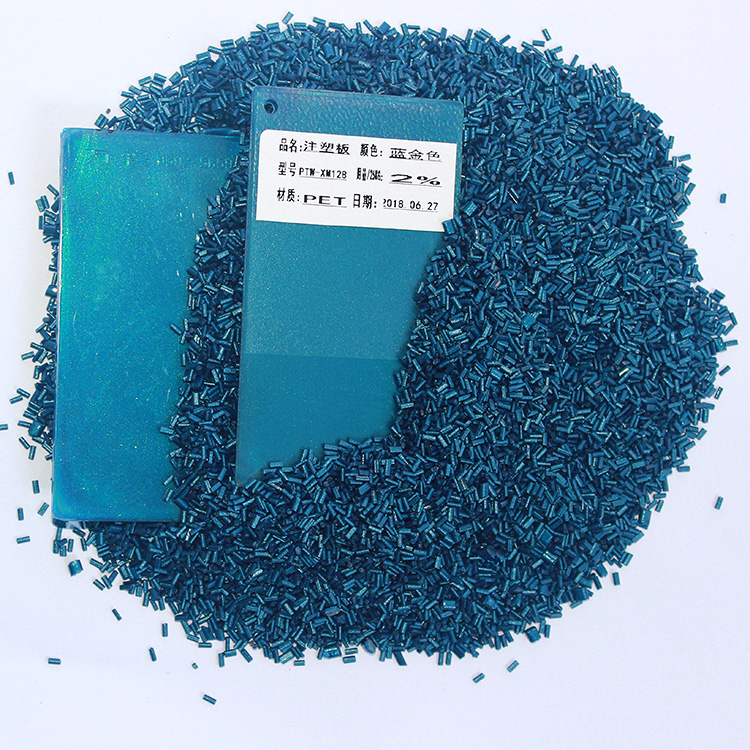
| FICHE DE DONNÉES SPÉCIFICATIONS | |||
| ARTICLE | UNITÉ | VALEURS | MÉTHODE |
| Couleur | – | Mélange maître de polyester bleu métallisé | – |
| Concentration de colorant | % | 10 | – |
| Point de fusion | ℃ | 245-252 | ISO11357-3:1999 |
| Débit massique de fusion/MFR | g/10min | 38 | ASTM D-1238 |
| FPV | barre/g | 0.45 | DIN EN 13900-5 |
| Viscosité intrinsèque | dl/g | 0.495 | GB17931-2003 |
| teneur en humidité | % | ≤0,1 | ASTM D6980-04 |
| densité apparente | g/ml | 0.907 | GB/T1636-1979 |
| différence de couleur△E | ≤ | 0.3 | △E≤0,5 |
La compatibilité du mélange maître en plastique PET de couleur bleu métallisé avec divers substrats plastiques, notamment le PE, le PP, le PET et d'autres ETP, en fait un choix incontournable pour les fabricants. Qu'il soit utilisé dans des plastiques rigides ou des films flexibles, et dans des processus tels que le moulage par injection, le moulage par soufflage ou l'extrusion de films, ce mélange maître garantit une teinte bleue métallique cohérente et vibrante.
La polyvalence du mélange maître en plastique PET de couleur bleu métallisé s'étend au-delà de sa teinte bleue captivante. Avec une gamme de couleurs disponibles, les fabricants ont la possibilité de personnaliser leurs produits en fonction des exigences de conception spécifiques et des préférences des consommateurs. Les options de couleurs incluent le laiton, le chrome, le cuivre, l'onyx noir, le graphite, le bleu métallisé, le bronze, l'or scintillant, la pantoufle rubis, l'argent scintillant, le bleu nuit, la cassonade et le chrome brillant.
Au cœur de cette technologie de mélange maître se trouve le concept de formulation de mélange maître nanocoloré. Grâce au mélange uniforme de pigments inorganiques ultra-fins utilisant la technologie de remplissage de nanoparticules inorganiques, le mélange maître en plastique PET de couleur bleu métallisé garantit une cohérence de couleur et des propriétés de dispersion supérieures. L'intégration de ces nano-pigments dans la matrice polymère lors du processus de fabrication garantit une coloration, des tons et des teintes précis.
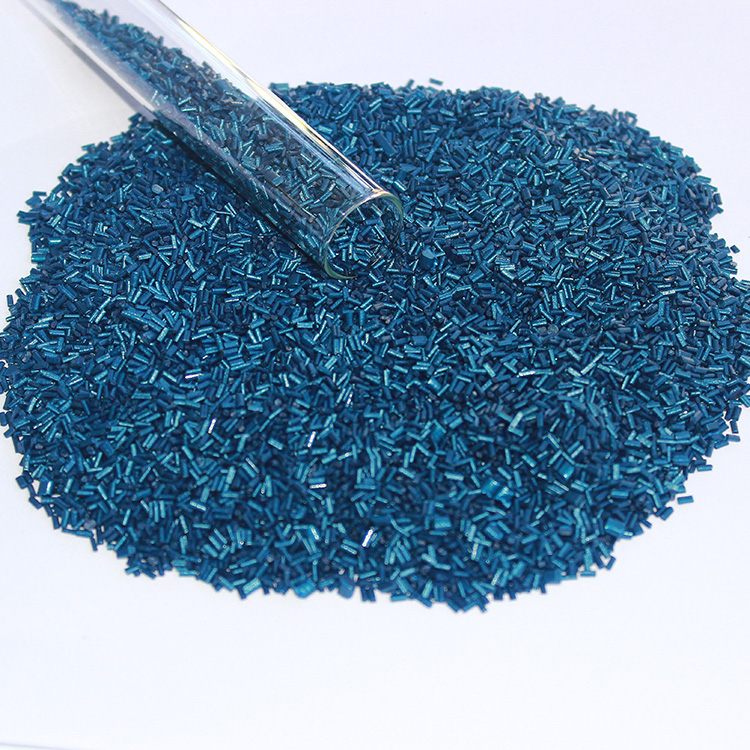
– Fabricant leader de mélanges maîtres en plastique ;
– Équipements de haute performance et équipe R&D solide, qualité de haute qualité ;
– Nous sommes partenaires de Decathon, Anta et de quelques autres marques mondiales ;
– Nous produisons toutes sortes de mélanges maîtres en plastique PET, PE, PP, ABS, PS, PA, PLA, PBAT, mélanges maîtres fonctionnels, PC/ABS ainsi que des plastiques modifiés ;
– Capacité énorme, livraison rapide et bons prix.
Le mélange maître bleu, un composant fondamental de la famille des mélanges maîtres de couleurs, joue un rôle crucial dans l'amélioration de l'intégrité structurelle et des performances. Formulé en combinant des concentrés de résine de base, de pigment bleu et d'additifs plastiques sous forme granulaire, il confère non seulement des teintes bleues vibrantes, mais est également largement utilisé dans les applications d'extrusion de films, de moulage par injection et de moussage.
En plus des nuances de bleu métallique, les mélanges maîtres de couleurs offrent une large gamme d'options esthétiques, allant des nuances unies et des couleurs pastel aux finitions nacrées, fluorescentes, effets marbrés et teintes transparentes. Cette vaste gamme de produits permet aux fabricants de libérer leur créativité et d'adapter leurs produits en plastique aux tendances changeantes du marché et aux préférences des consommateurs.
En conclusion, l’introduction du colorant PET personnalisé bleu métallisé représente une avancée révolutionnaire dans le domaine de la fabrication des plastiques. En combinant une esthétique haut de gamme avec des solutions de production rentables, cette technologie innovante de mélange maître permet aux fabricants d'améliorer l'attrait visuel de leurs produits tout en répondant aux demandes des consommateurs exigeants d'aujourd'hui.
Nous sommes l'un des principaux fabricants de mélanges maîtres en plastique, nos produits sont approuvés et des clients comme COCA COLA, PEPSICO….

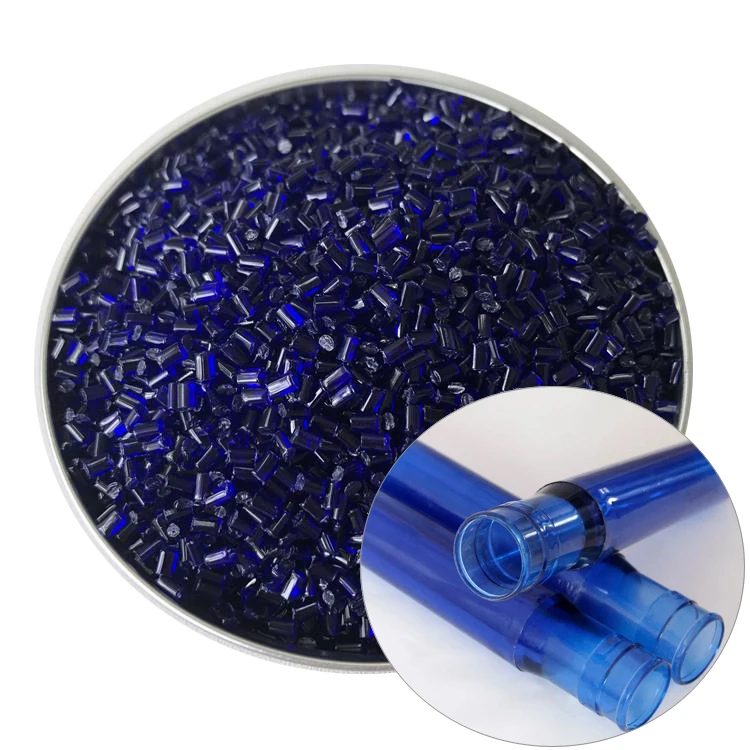
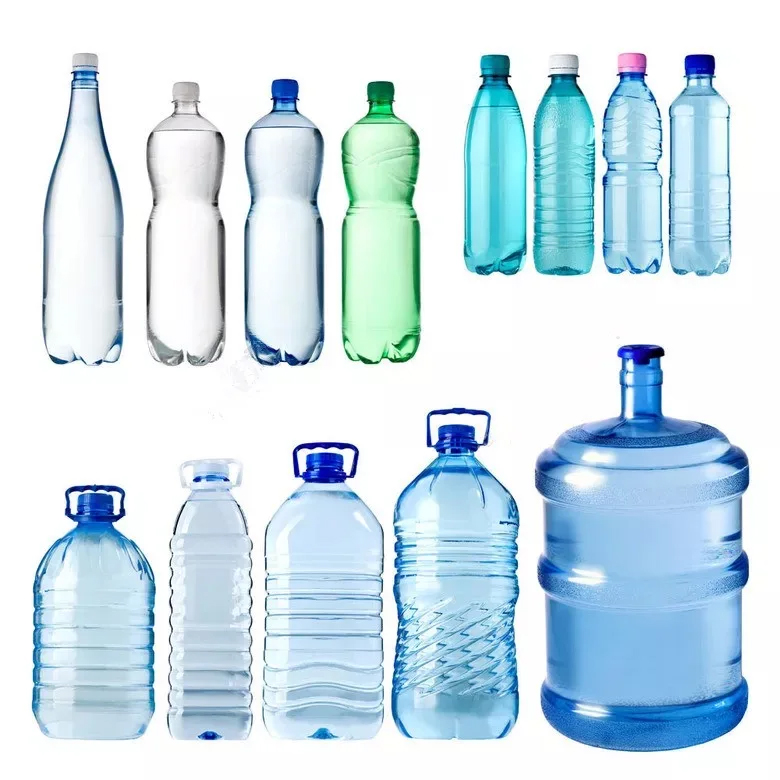
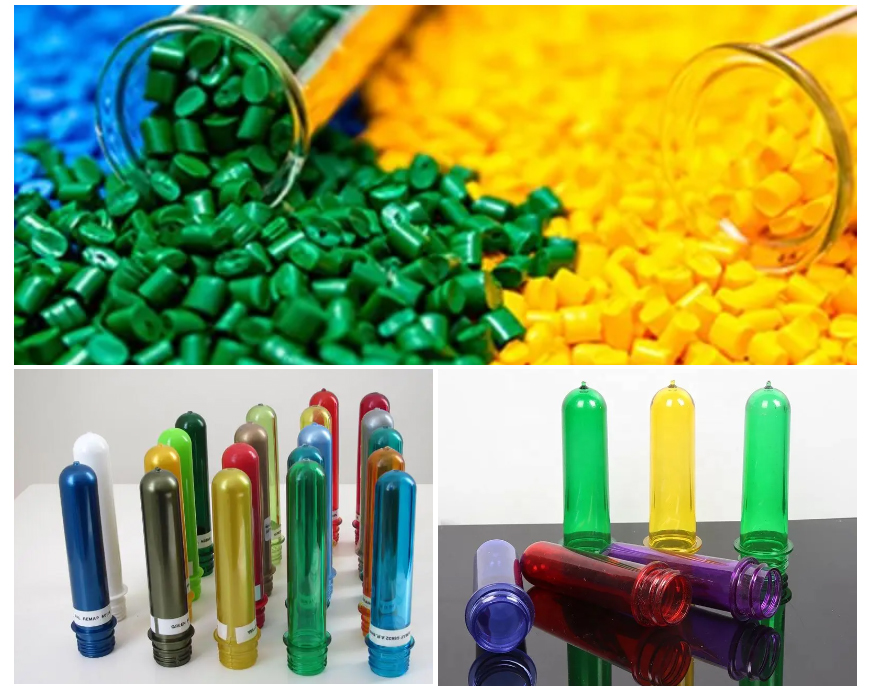
Notre société est présente depuis plus de 20 ans dans l'industrie des mélanges maîtres en plastique, nous nous spécialisons dans la recherche et la production de toutes sortes de mélanges maîtres de couleurs, de mélanges maîtres fonctionnels, de plastiques renforcés de fibre de verre et de matières premières plastiques résistantes à la combustion, situés dans le parc industriel de Tong'an de la ville de Xiamen en Chine.
En conclusion, nous sommes professionnels dans la production de toutes sortes de mélanges maîtres en plastique, y compris le mélange maître additif, le mélange maître fonctionnel, le mélange maître ignifuge PE, le mélange maître ignifuge ABS, le mélange maître anti-oxygène, le mélange maître anti-UV, le mélange maître antibactérien, le mélange maître antiblocage. , et quelques autres mélanges maîtres additifs.
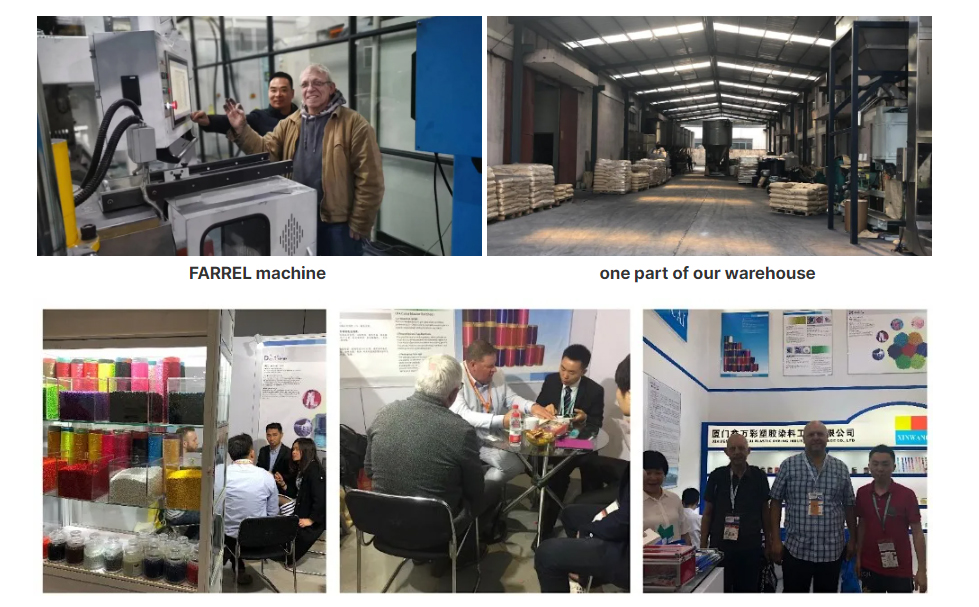
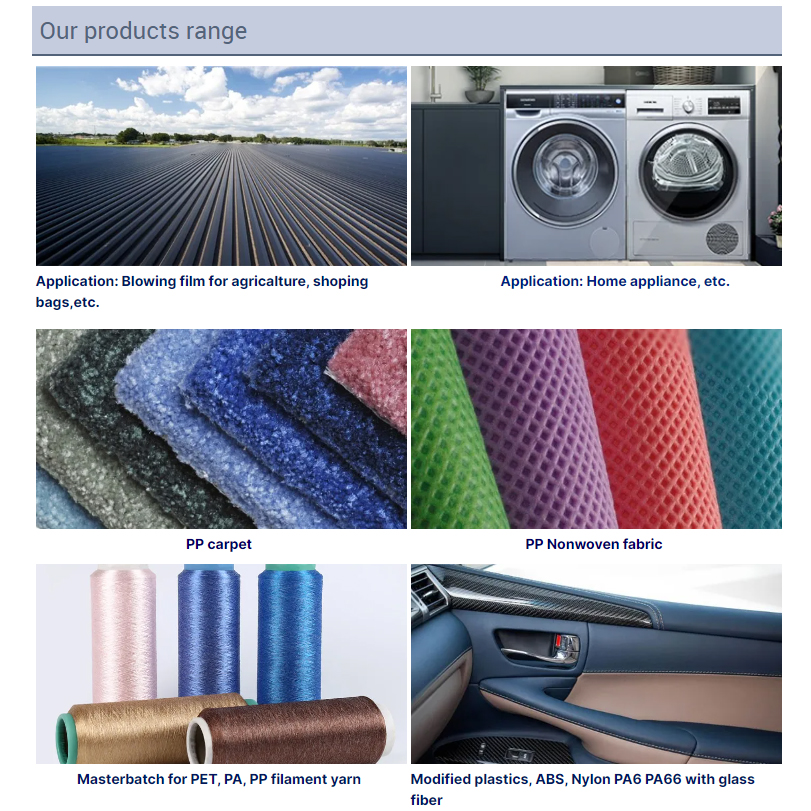
Nos mélanges maîtres trouvent une multitude d’applications dans diverses industries. Qu'il s'agisse de plastiques, de textiles ou de divers procédés de fabrication, nos mélanges maîtres jouent un rôle central dans l'amélioration de la qualité et des performances des produits. Avec des formulations personnalisables, ils offrent une cohérence de couleur, une protection UV, une résistance aux flammes et bien plus encore, ce qui en fait la solution incontournable pour d'innombrables applications. Des pièces automobiles aux matériaux d'emballage, nos mélanges maîtres sont le choix de confiance pour obtenir des résultats supérieurs dans un large éventail d'industries.
Nos mélanges maîtres personnalisés sont conçus pour correspondre à des polymères spécifiques, garantissant des performances optimales une fois incorporés dans le matériau sélectionné. Nous avons la capacité de produire des mélanges maîtres adaptés à une variété de polymères mentionnés ci-dessous, et bien d'autres encore. Si vous travaillez avec un matériau qui n'est pas répertorié ici, n'hésitez pas à contacter notre équipe technique compétente pour explorer la possibilité de répondre à vos besoins spécifiques.
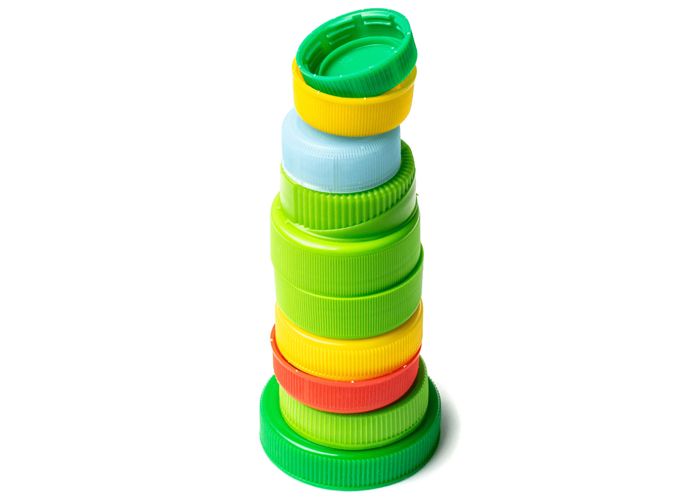
Polyéthylène basse densité – Un peu plus translucide que le PEHD et considérablement plus souple, principalement utilisé dans les emballages flexibles, les sacs fourre-tout, les tubes souples, les applications de films et les utilisations similaires. Comme le PEHD, il présente des caractéristiques de transparence limitées. Il présente une résistance chimique exceptionnelle aux alcools, aux acides et aux alcalis, mais une résistance limitée aux solvants hydrocarbonés et aux huiles minérales. Une exposition prolongée aux rayons UV peut initier une dégradation.
Polyéthylène haute densité – Doté d'un aspect quelque peu blanc laiteux, ce matériau trouve de nombreuses applications dans les emballages de bouteilles rigides, les bouchons et fermetures moulés par injection, les caisses, etc. Son opacité naturelle peut limiter le degré de transparence atteignable. Le PEHD présente une résistance supérieure aux produits chimiques et aux solvants par rapport au LDPE.

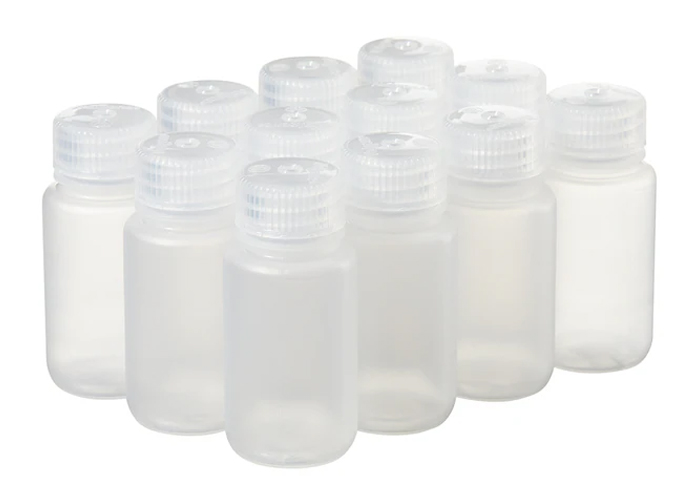
PPCO Random & PPHO – Un polymère de clarté modérée, utilisé dans la production de bouchons et de fermetures. Il est également utilisé pour fabriquer des articles ménagers, des seaux, des jouets et des conteneurs de stockage. Le polypropylène offre une flexibilité sans limitations significatives en termes de couleur ou d'effets spéciaux. Le copolymère aléatoire offre une plus grande clarté que l'homopolymère et convient mieux à la création de nuances translucides.
Bloc PPCO – Similaire au PPCO mais amélioré pour une résistance accrue aux chocs. Un additif rend le polymère blanc, ce qui lui confère une opacité élevée. Cette caractéristique peut limiter la transparence réalisable.
Polyéthylène téréphtalate (PET) – Les matériaux en polyester présentent une résistance mécanique robuste ainsi qu'une excellente résistance chimique et des propriétés barrières. Le PET est fréquemment choisi pour la production de contenants de boissons gazeuses. De plus, le polyester peut être filé et utilisé dans la fabrication textile pour l’habillement. Le PET est hautement transparent, ce qui en fait un excellent choix pour les emballages translucides, même si un subtil soupçon de « jaunissement » peut affecter les teintes extrêmement claires.

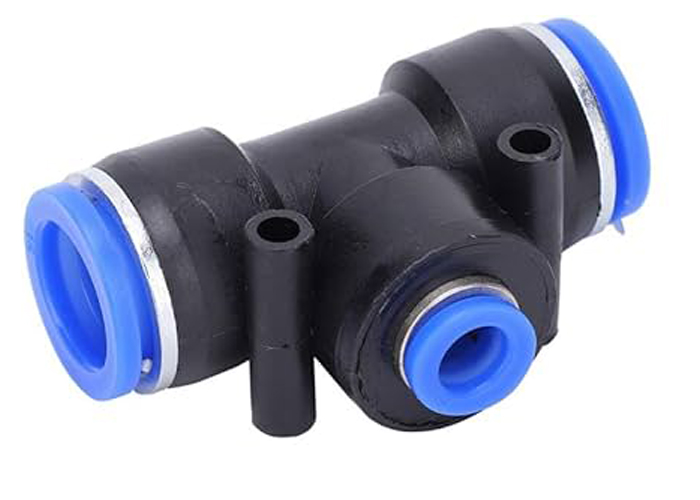
Polybutylène téréphtalate – Un polymère technique thermoplastique cristallin fréquemment utilisé comme matériau isolant dans le secteur de l'électronique. Cette substance appartient à la catégorie des polyesters, présentant un équilibre remarquable d'attributs et de qualités de transformation.
Polystyrène à usage général – Présentant un aspect transparent mais possédant une résistance aux chocs minimale, ce matériau trouve sa principale application dans les boîtiers de CD. Sa clarté remarquable le rend adapté à la création de teintes translucides, même si une teinte violette occasionnelle peut être perceptible.
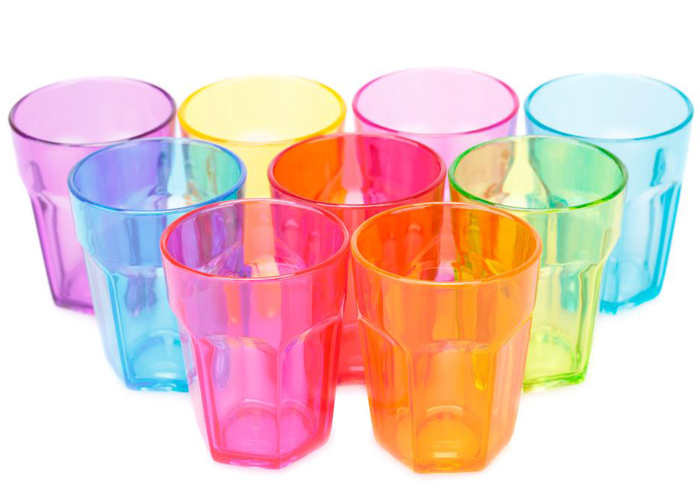
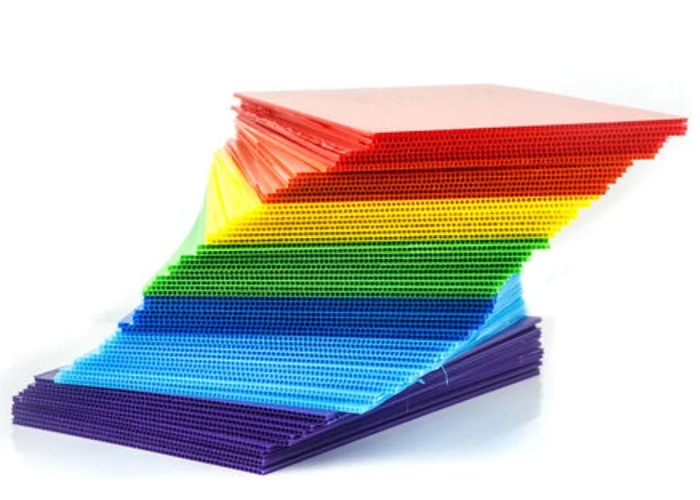
Polystyrène à fort impact – Dérivé du GPPS en incorporant un agent améliorant l'impact pour augmenter sa résistance aux impacts. Ce composant ajouté fait que le polymère devient blanc et différentes formulations offrent différents degrés d'opacité. Généralement utilisé dans la fabrication de pièces de jeu, de jouets et d'articles similaires. Sa blancheur prononcée peut poser des problèmes lorsqu’on recherche une coloration translucide. Des alternatives spécialisées comme K-Resin et Styrolux sont accessibles sur le marché pour atteindre le même niveau de translucidité que le GPPS.
Acrylonitrile Butadiène Styrène (ABS) – Une itération plus robuste de polystyrène à fort impact (HIPS) utilisée dans les composants de grande valeur. L'ABS présente une plus grande durabilité que les composants fabriqués par HIPS, bien qu'il rencontre des défis similaires lorsqu'il tente d'obtenir des colorations translucides. Tout comme HIPS, ABS propose des variantes translucides spécialisées. En raison de sa durabilité, l’ABS est couramment utilisé dans la fabrication de boîtiers pour outils électriques.

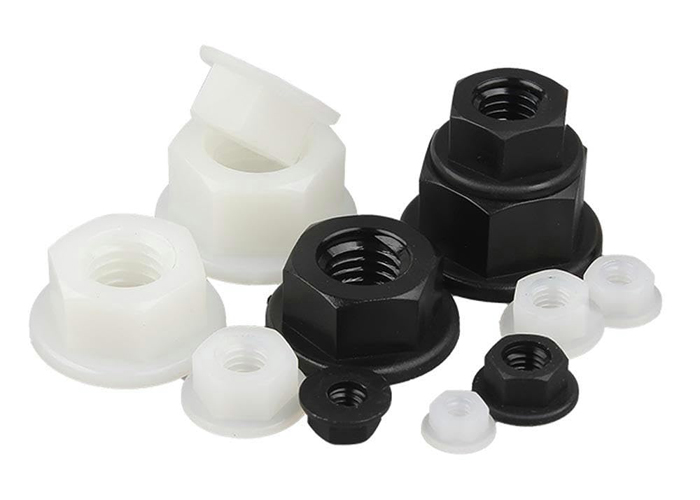
Polyamide (6, 66) – Le nylon représente une qualité polyvalente largement utilisée dans la construction mécanique et la maintenance. Sa popularité vient de son excellent mélange de résistance mécanique, de rigidité, de caractéristiques d’amortissement mécanique et de capacités efficaces d’isolation électrique. Par conséquent, le nylon est un matériau privilégié pour la fabrication de boîtiers électriques. Le PA66 constitue une alternative courante au métal dans diverses applications, avec ses attributs chimiques et physiques ressemblant étroitement à ceux du PA6. Le PA6 présente une résistance supérieure aux chocs et aux solvants, mais avec une sensibilité accrue à l’absorption d’humidité.
Copolymère styrène acrylonitrile – Possédant une transparence et une résistance exceptionnelle aux produits chimiques et à la chaleur, le SAN présente également une bonne rigidité, résistance à la traction et résistance à la flexion. Grâce à sa finition très brillante, le SAN est couramment choisi pour les emballages cosmétiques. Cependant, obtenir des couleurs claires avec SAN peut s'avérer difficile en raison des colorants violets inhérents au matériau, qui sont utilisés pour améliorer son aspect visuel lors de la fabrication.
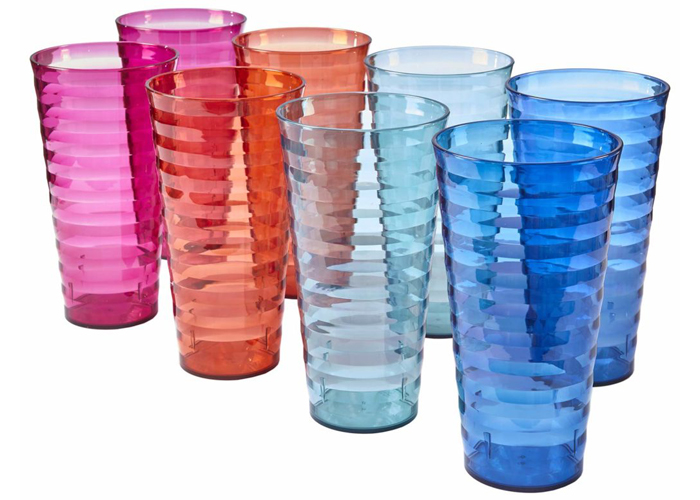

Polyéthylène Téréphtalate Glycol – PET avec incorporation de glycol. Cet ajout de glycol améliore les propriétés d'écoulement mais diminue la résistance. Le PETG peut être extrudé pour créer des bouteilles et peut être transformé en feuilles pour produire des emballages de type « blister ».
Élastomère thermoplastique (TPE) ou polyuréthane thermoplastique (TPU) – Le TPU trouve diverses utilisations dans des applications telles que les tableaux de bord automobiles, les roulettes, les outils électriques, les dispositifs médicaux, ainsi que diverses applications de films, feuilles et profilés extrudés. Les TPE sont utilisés dans un large éventail d'applications dans des industries couvrant les secteurs de l'automobile, du médical, de la construction, de l'électricité, de l'électroménager, de l'emballage et de l'industrie.
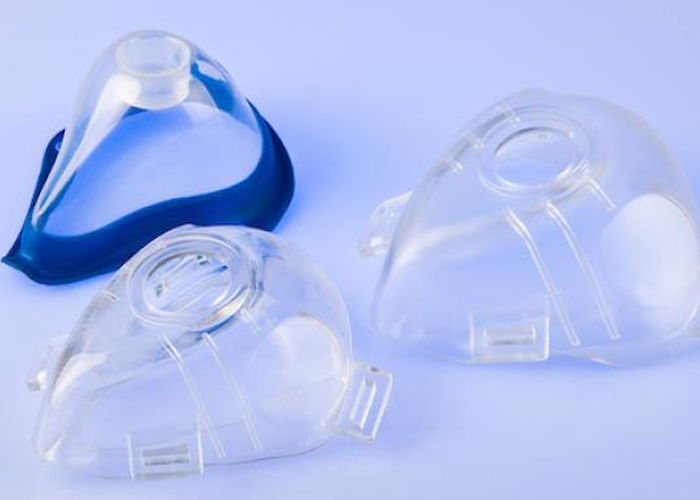
Questions fréquemment posées sur notre mélange maître
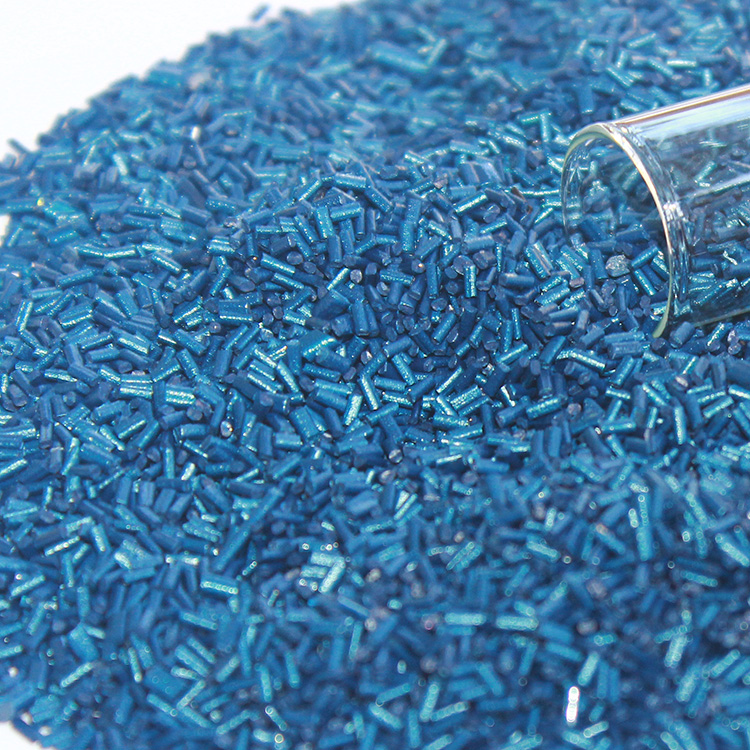
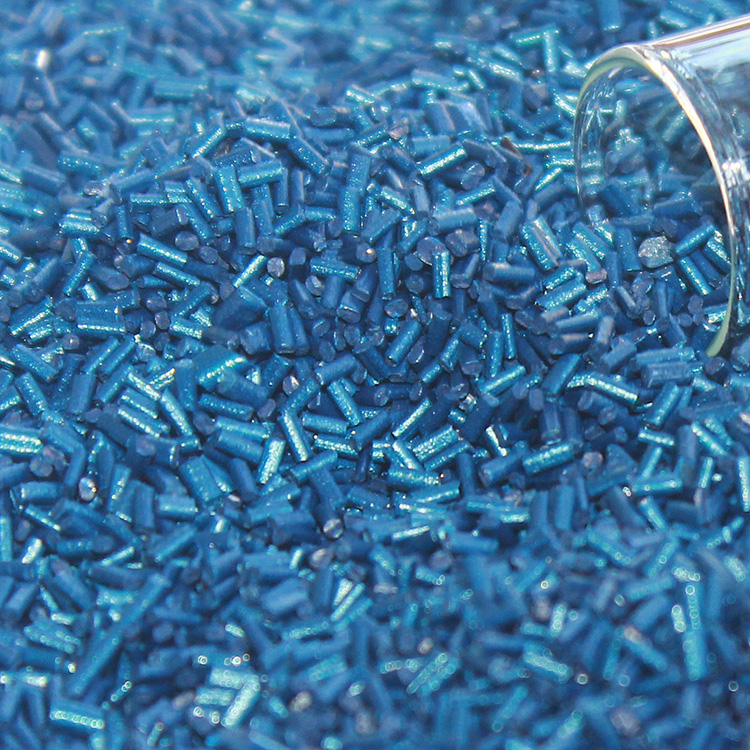

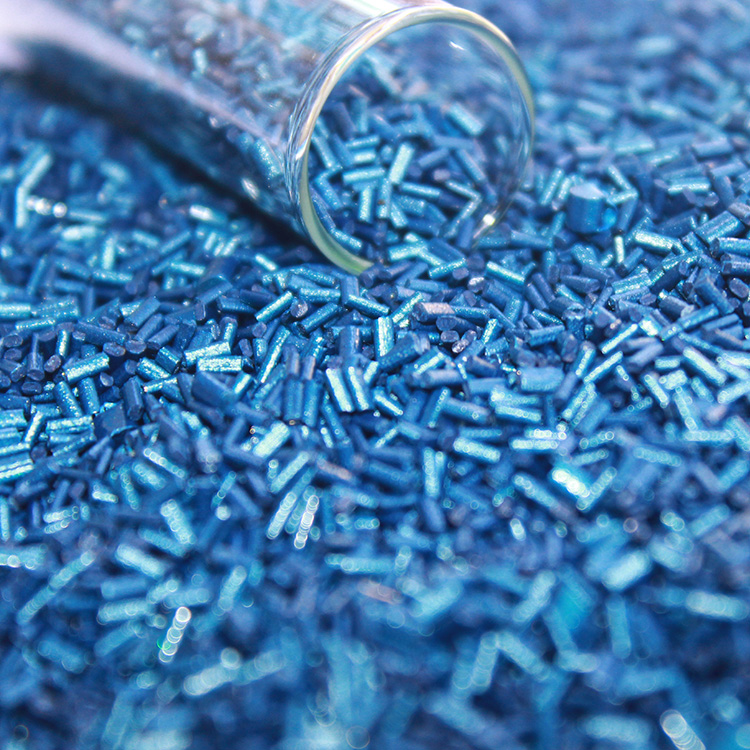
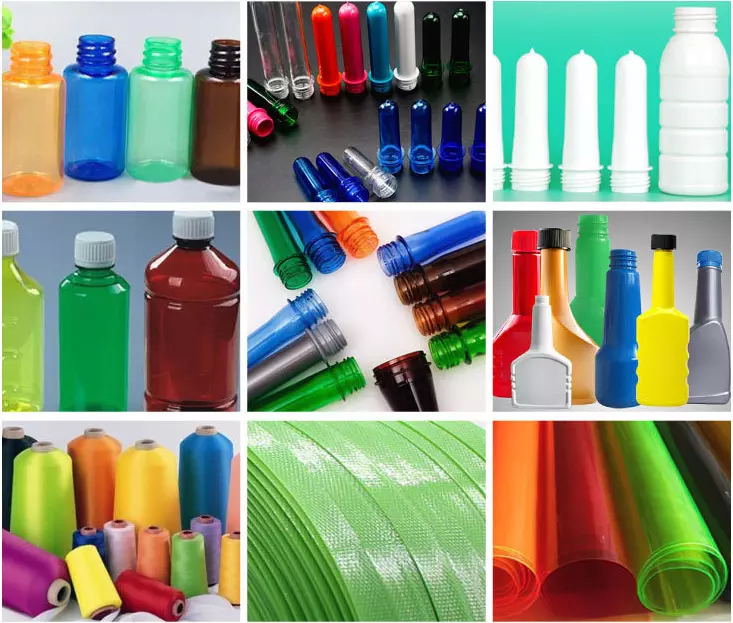
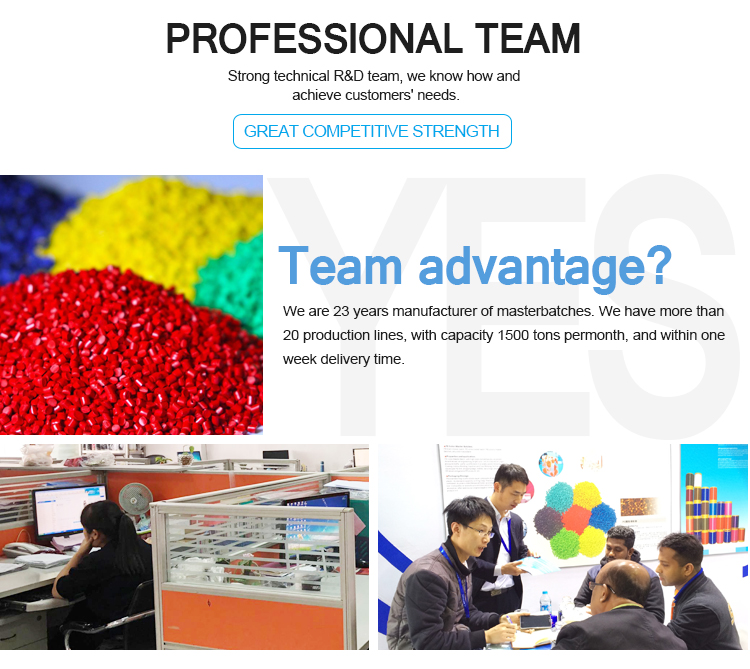
©2023. Fabricant du mélange maître Tous droits réservés.
Notre équipe vous enverra la meilleure offre dans 20 minutes.